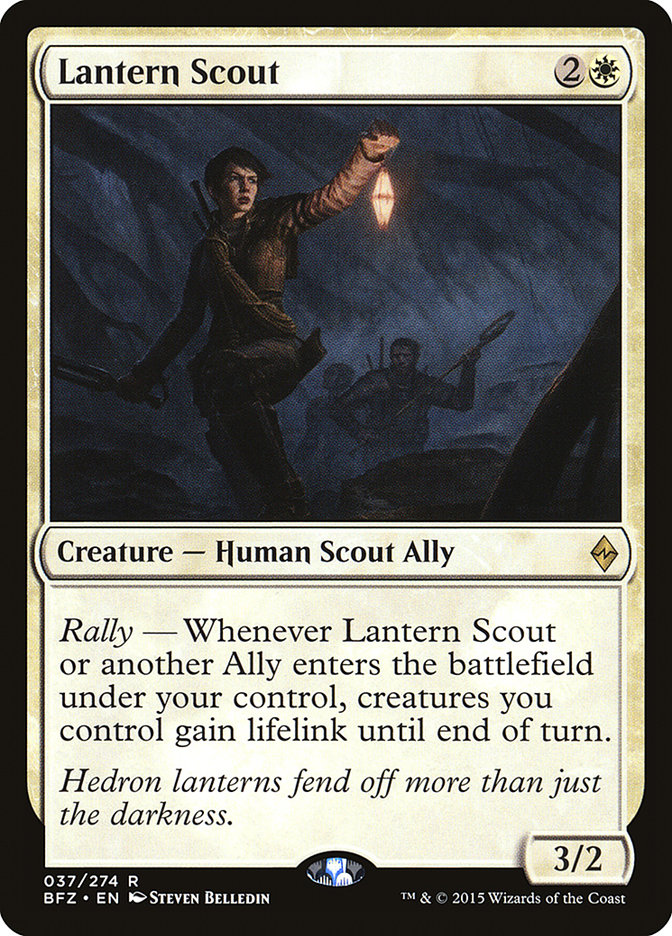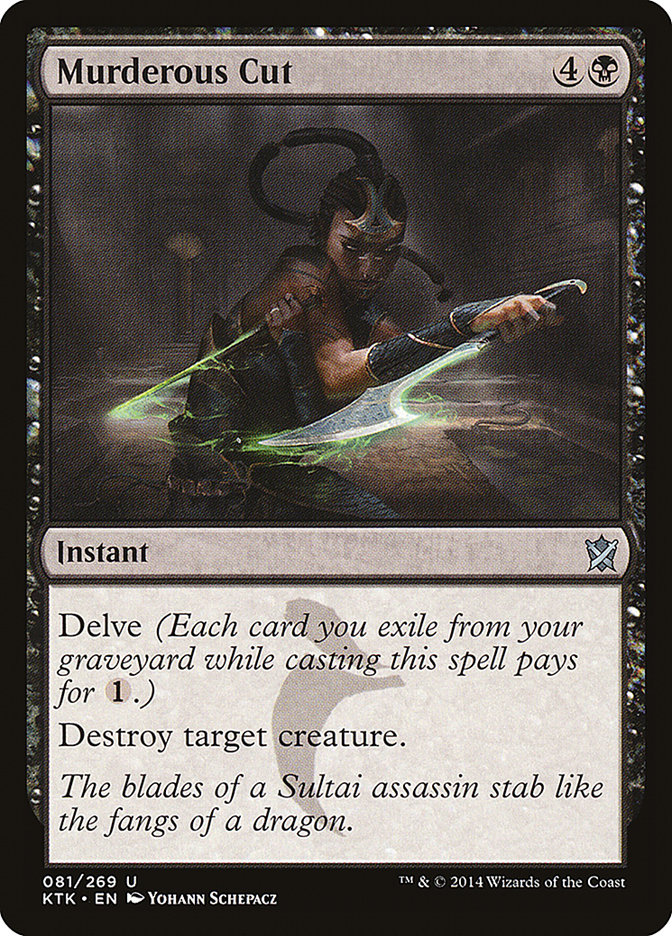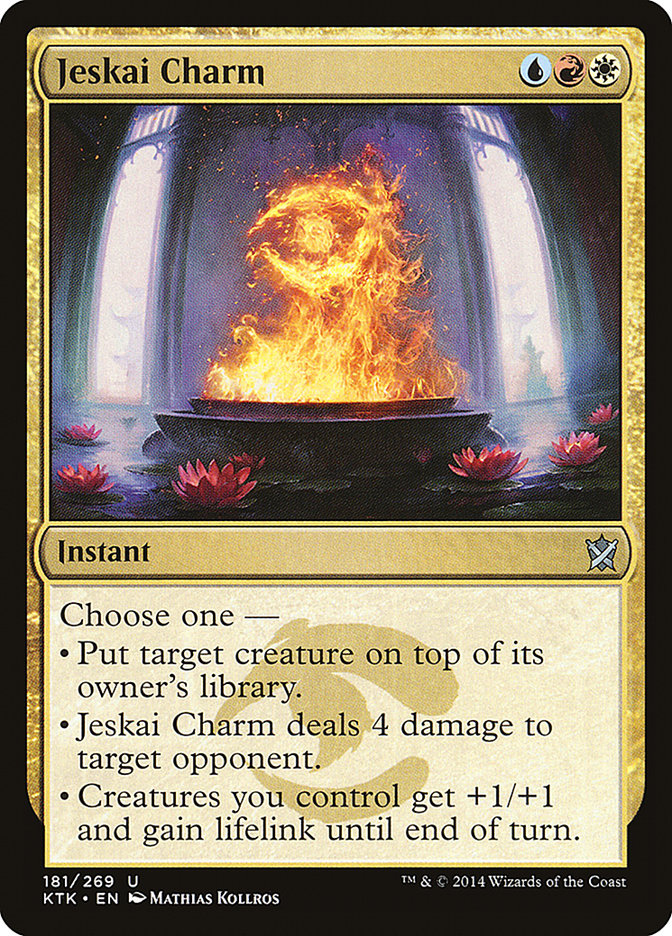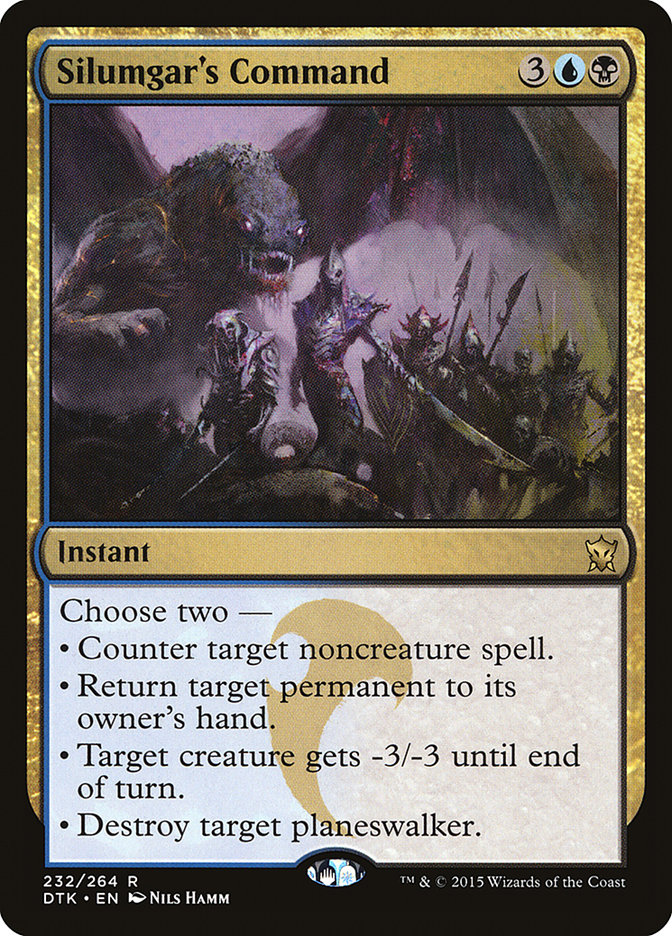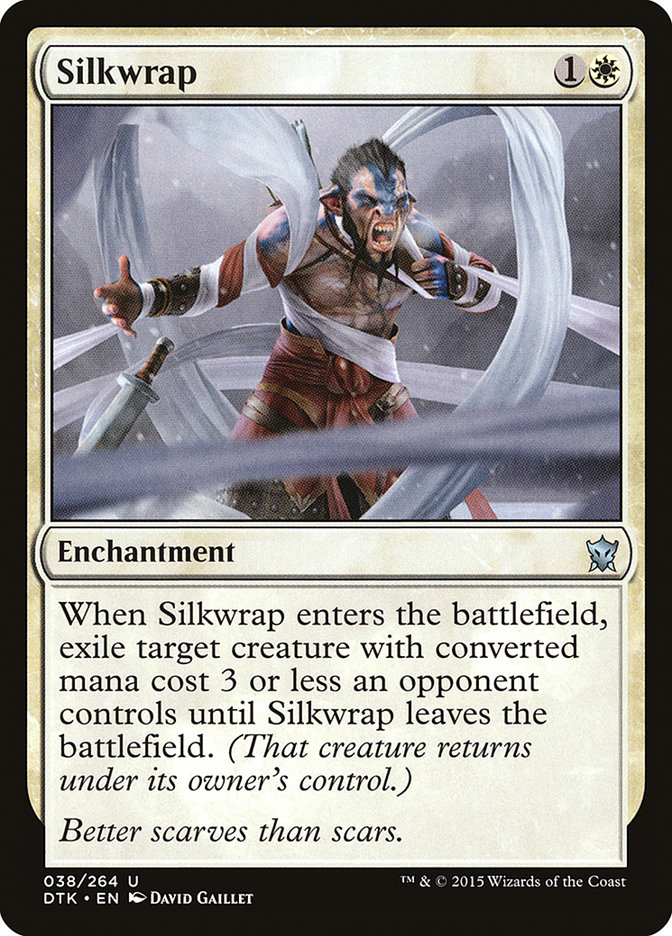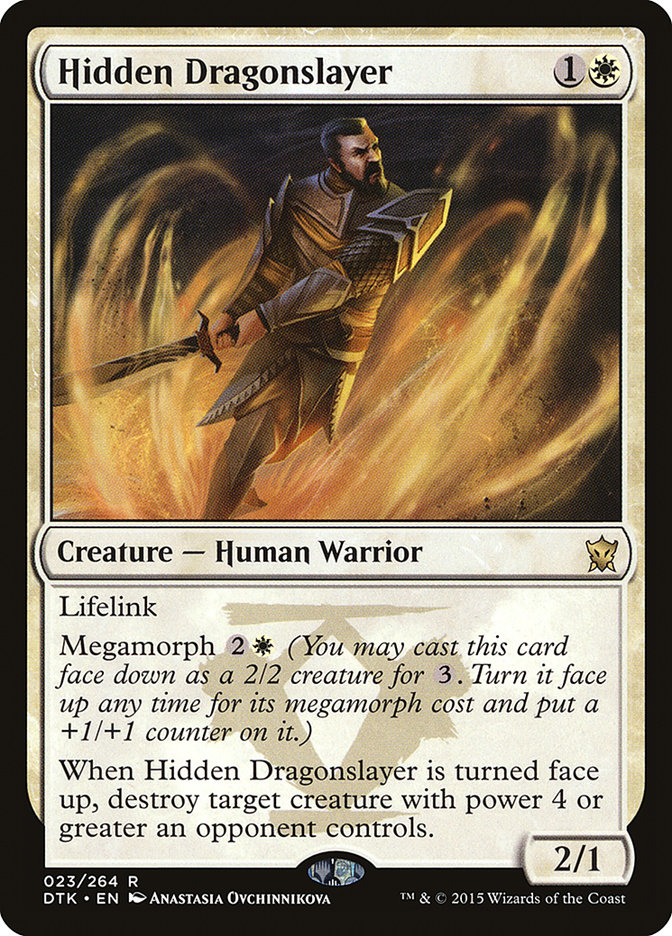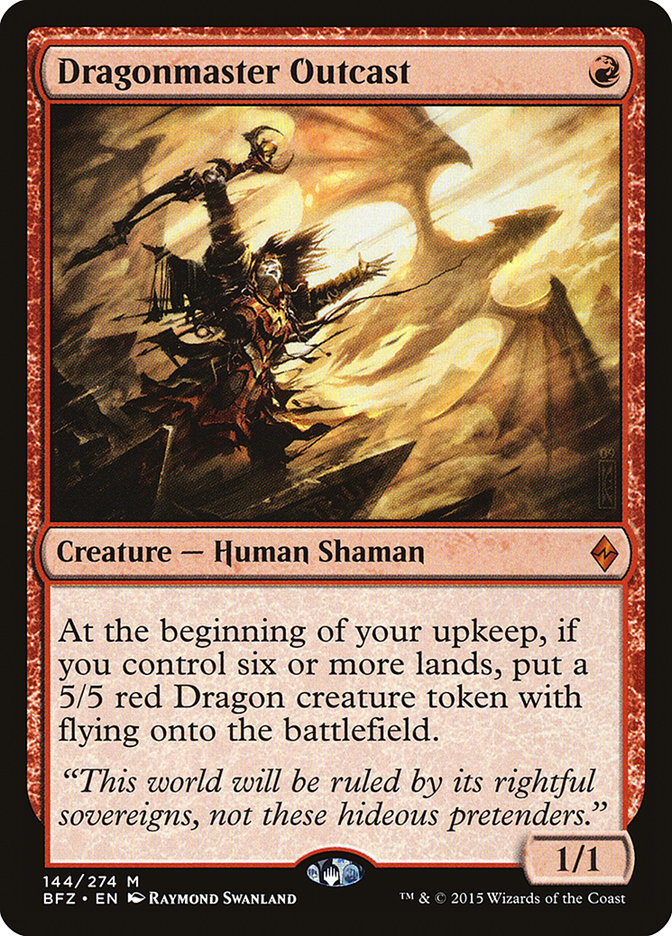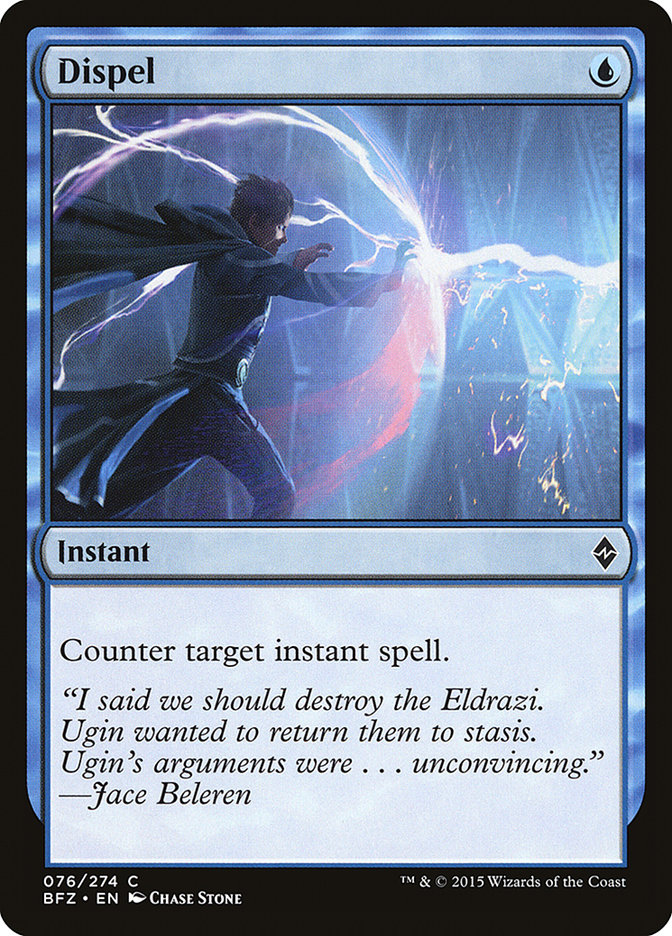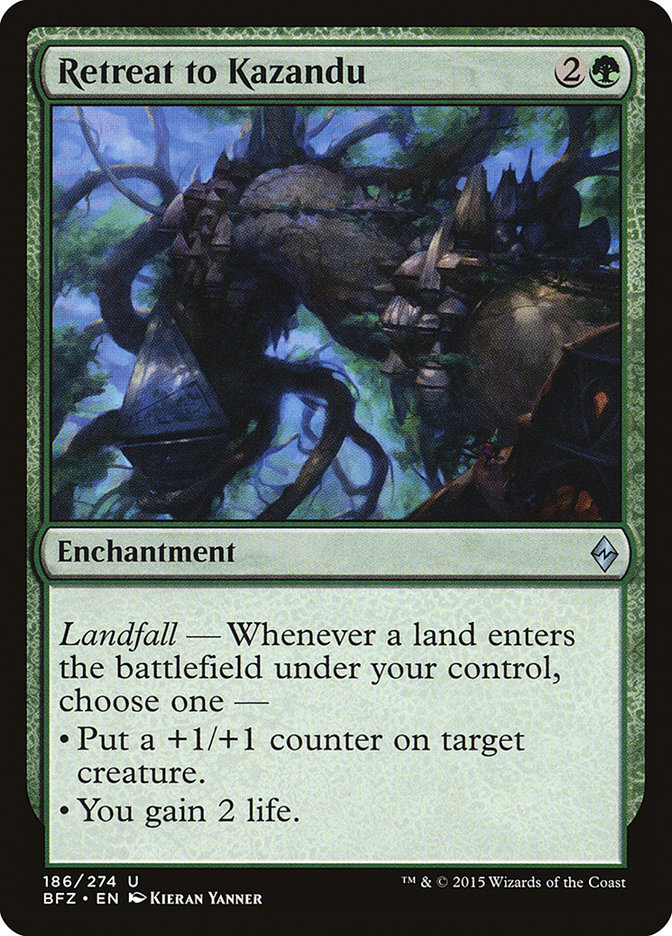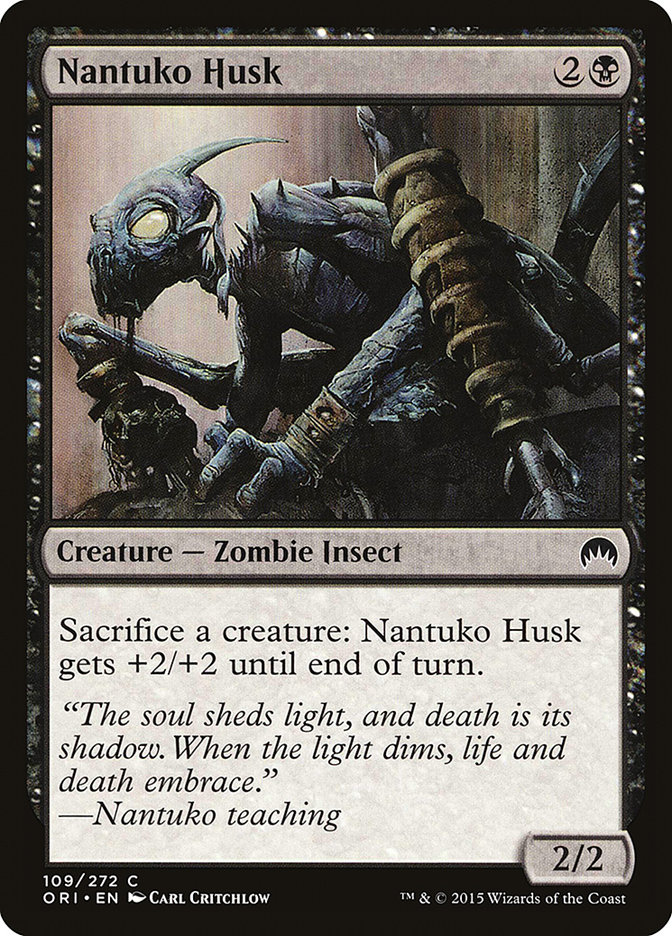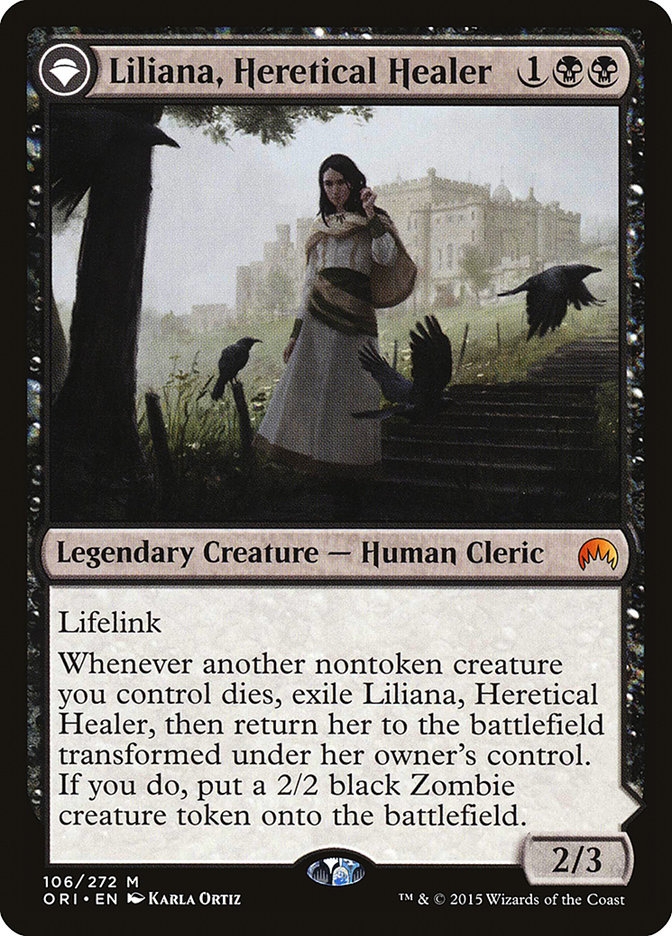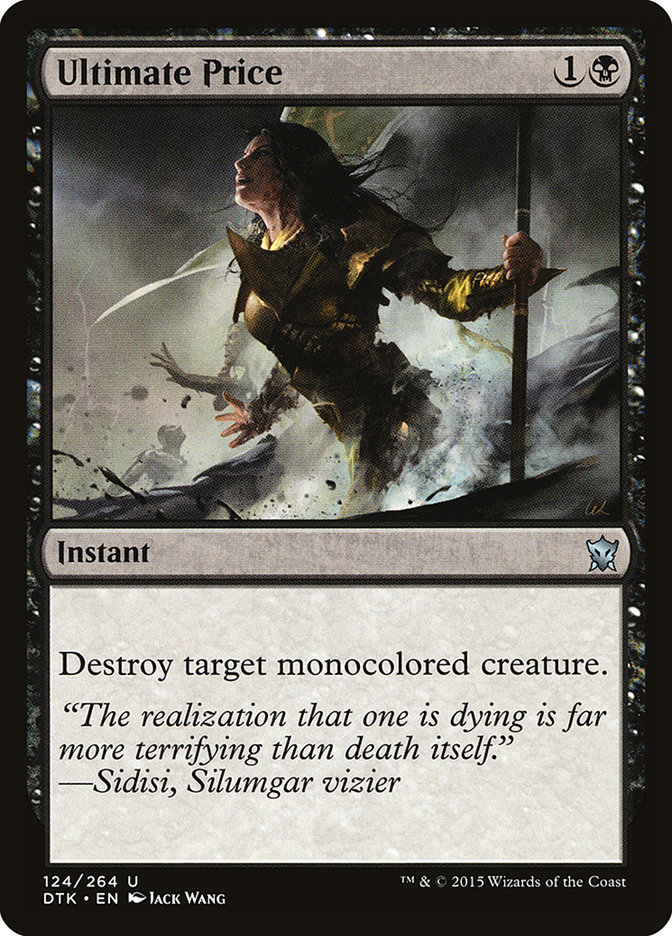#SCGINDY is behind us as the first big Standard tournament featuring Battle for Zendikar. We mostly saw a field of untuned decks get picked apart
by efficient two-color decks like Atarka Red, G/R Landfall, and G/W Megamorph, or solved by slowish Bring to Light decks capable of answering anything.
The evidence is coming in as to what cards from Battle for Zendikar are truly Standard playable. Also, with Theros block and M15
leaving, cards from Khans of Tarkir block have stepped up to fill in various roles. It was already clear that cards like Jace, Vryn’s Prodigy and
GIdeon, Ally of Zendikar would be great in new Standard. This is a list of cards from #SCGINDY that struck me as overperformers.
Overperformers
10.
One thing that we learned from #SCGINDY and Brian DeMars is that Arashin Cleric isn’t enough to beat Atarka Red. I personally lost a game in the Swiss
where I lost on a G/R Landfall opponent’s turn 4 after playing Arashin Cleric and Abzan Charm exiling a pumped Makindi Sliderunner.
Sorin, Solemn Visitor is pretty good at converting the power of your creatures into life points. Sorin is attackable and costs four mana, which can be
tough especially since it’s costs the same at Siege Rhino. Christina Smith used Lantern Scout and Surge of Righteousness in her Abzan Aggro sideboard instead of Arashin Cleric or Sorin, Solemn
Visitor on her way to a top 32 finish. Lantern Scout more reliably trades with aggressive creatures like Scythe Leopard, Abbot of Keral Keep, or Makindi
Sliderunner, whereas Arashin Cleric can’t.
9.
There’s a serious lack of good instant-speed removal that’s non-conditional (or close to it), where Hero’s Downfall and Stoke the Flames filled the role
previously. People are naturally upping the numbers of fetchlands to go with the Battle land manabases, which has graveyards filling earlier more often.
Murderous Cut can be cast turn 3 if necessary with two fetchlands, but it really shines when you’re casting it for one mana on turn 4 or 5 along with
another spell. Murderous Cut is so good and so necessary that it pushes away the use of other delve spells like Tasigur, the Golden Fang. There’s a real
opportunity to play Treasure Cruise in Abzan Aggro when the deck already splashes blue, but it’s so rare that you would want to sideboard out Murderous Cut
while siding in a draw three. Jace, Vryn’s Prodigy demands a response, and cutting removal against even slow control decks can lead to you getting buried
under the planewalker’s value.
8.
It’s clear that G/R Landfall is a deck, but which landfall creatures are better than others? From the looks of things, Makindi Sliderunner’s trample is
more important than the extra toughness from Snapping Gnarlid from the numbers that people used. Brian DeMars declined to play Scythe Leopard even though
his manabase probably could’ve accommodated it.
Grove Rumbler is a touch too slow, as you’d have exhausted many of your fetchlands getting to four mana. Undergrowth Champion lacks evasion, and while a
couple copies may be okay, I’ve found the card underwhelming and rather easy to deal with. Makindi Sliderunner looks to be the best landfall creature in
the set due to its cheap cost and trample, which makes great use of pump effects like Titan’s Strength and Become Immense.
7.
Jeskai Aggro is good at putting on early pressure with two-drops and Mantis Rider then finishing the opponent off with burn spells. Again, Lightning Strike
and Stroke the Flames are gone so Jeskai players needed to fill up on reach spells with Jeskai Charm. As it turns out though, Jeskai Charm’s other modes
are really good too. There’s even a fourth hidden mode on it — it kills Gideon! They still get a Knight Ally, token but that’s fine when you really need
to get it off of the battlefield immediately. Returning a creature to the top of owner’s library is great against creatures like Hangarback Walker or an
awakened land, or just really anything that’s not Siege Rhino or a similar creature that creates value when it enters the battlefield.
6.
I remember watching Gerry Thompson resolve Bring to Light against a Nissa, Sage Animist and its 4/4 Elemental token and almost losing my mind when he
didn’t get Silumgar’s Command to bounce the token and destroy Nissa. It turns out that he cut it from his maindeck before the tournament,
which was a mistake that he has since fixed
.
Silumgar’s Command is a clean answer to planeswalkers and the token they create, like Gideon, Ally of Zendikar and Nissa, Sage Animist. Outside of that
interaction, Silumgar’s Command will be a two-for-one more often than not. Even though Atarka Red won #SCGINDY, the format is still full of midrange
strategies, which Silumgar’s Command matches up well against. I can see this card as a one-of for most Bring to Light decks and as a sideboard card of any
deck that can produce black and blue. Brad Nelson is also a huge fan of the card, enough to sideboard a copy in his Abzan Aggro deck.
5.
Early removal is scarce without Bile Blight and Lightning Strike. Something is needed that hits Jace, Vryn’s Prodigy and stems the bleeding from a rush of
creatures. Many chose to run Reave Soul in the cheap removal slot, which has its advantages, but overall more disadvantages than Silkwrap. The biggest is
that it answers Hangarback Walker for good, even through an enchantment removal spell like Dromoka’s Command. The fear of using Silkwrap is that sometimes
they will get a real creature back and it’ll be a big swing for them. Todd Anderson ran a copy of Silkwrap in his maindeck at #SCGINDY and he indeed had to give a creature
back that was under a Silkwrap, but still the tempo gained from removing it in the first place was too tough to overcome. Remember: if they’re using the
sacrifice mode of Dromoka’s Command, it still costs one of the card’s modes, so they’re either not fighting or not putting a +1/+1 counter on something, so
even the worst case scenario isn’t the end of the world.
4.
Michael Majors ran two copies in his G/W Megamorph deck on his way to a second place finish at #SCGINDY. It was great in his megamorph theme, but is just a
good card in general right now. It blocks and gains life against aggro decks in a similar way that Arashin Cleric does while also acting as a threat plus
Valorous Stance against big creatures. It also feels better to cast on turn 2 than Den Protector now that we’re in a world without Fleecemane Lion. Right
now it’s mostly assumed that any given morph is a Den Protector, and Hidden Dragonslayer can (and does) catch people off-guard. I expect the numbers of
Hidden Dragonslayers to pick up in the upcoming weeks.
3.
With Gods Willing gone, there’s little fear that your removal spell won’t resolve against white mana anymore. Gods Willing showed up as a four-of in
variants of Heroic and in high numbers in some prowess-based decks. I’ve even seen a copy or two in Jeskai and Abzan Aggro from time to time. Feat of
Resistance costs two mana, which is significantly more than one, but still provides an effect that isn’t currently being used in Standard. David Phelps’ G/W Hardened Scales deck ran three copies, which blew out a few
opponents that relied on colored blockers or banked on their removal spell resolving. He had a +1/+1 counter theme going on, which Feat of Resistance
naturally fits into, but I can see it going into more decks in small numbers or out of the sideboard. I do know that removal spells that exile will be at a
premium in the new Standard, and cards like Valorous Stance that give indestructible or pump spells that increase a creature’s toughness won’t save your
creature from Abzan Charm or Utter End.
2.
Dragonmaster Outcast wasn’t played much when it was legal in the original Zendikar Standard. Part of this was that the cards were so strong, like
Jace, the Mind Sculptor, Primeval Titan, and Bloodbraid Elf. Many red decks ran Bloodbraid Elf, and cascading into Dragonmaster Outcast was much worse than
something like Blightning or Maelstrom Pulse. Also it competed with Scute Mob, which started triggering a turn earlier.
Now the power-level of Standard is a touch lower. Also, both Jace, Vryn’s Prodigy and Ojutai’s Command exist. The former discards the 1/1 when it isn’t
relevant, and the latter puts it back onto the battlefield when it’s the most relevant. Bradley Vogt ran this combo to a top 64 finish with two maindeck
copies of Dragonmaster Outcast, while Clay Spicklemire sideboarded a
copy in his top 8 Jeskai Black deck.
1.
Dispel has been a maindeck card in Modern Splinter Twin decks and others for a while now and a card I used to good effect in the sideboard of Infect in
both Modern and Legacy. The tempo advantage is huge when you trade a one mana spell for an Electrolyze or Cryptic Command. In Standard, we play a couple
copies in our Abzan Aggro deck, which proved amazing against
anything from Ojutai’s Command to Abzan Charm to Atarka’s Command. What felt particularly strong was holding up Dispel and Murderous Cut at the same time
with a single Sunken Hollow. Nearly every deck runs a healthy number of instants, and as the format develops, I can see Dispel showing up in greater
numbers, even as a maindeck choice.
Top 5 Cards I Expected To See But Didn’t
5.
I figured Retreat to Kazandu to be a great source of lifegain in decks featuring a bunch of fetchlands, but not an aggressive gameplan like multicolor ramp decks. The threat of putting a +1/+1 counter at
instant speed on any creature is a great second ability as well. Maybe the card was overlooked or it simply wasn’t efficient enough in testing. In any
case, I was surprised not to see it.
4.
There’s certainly enough pieces to build a sacrifice deck with Nantuko Husk cards like Abzan Ascendancy, Liliana, Heretical Healer, Hangarback Walker,
Blisterpod, Catacomb Sifter, and Bone Splinters. Rally the Ancestors is still legal as well, but perhaps the loss of Mogis Marauder, Satyr Wayfinder, and
Elvish Mystic was too big of a blow to the deck. Although Nantuko Husk may not be a one-shot kill like before, it’s definitely a role player in the
hypothetical next coming of The Aristocrats that’s yet to be fleshed out.
3.
A super-pushed mythic that I was sure would get some spotlight time after rotation. Its triple-white casting cost is no longer something that feeds
devotion, and its four-cost competes with Siege Rhino and Gideon, Ally of Zendikar. I think that people still really wanted to experiment with multicolored
manabases to start, but will eventually settle into two-color decks. I can see the 3/5 flyer being a big player soon in new Standard.
2.
Liliana goes into the sacrifice deck very well, but it is also just a really good card on her own. The 2/3 dodges a lot of the removal like Abzan Charm,
Valorous Stance, and Wild Slash, which is currently a pretty good sweet spot. Perhaps she’s another card that suffers because of the way multicolor
manabases were constructed, which tend to make three different colors more easily than two of any particular one.
1.
The word sure got out fast how Ultimate Price doesn’t kill Mantis Rider or Siege Rhino. But so what? It still hits a significant number of creatures and at
instant speed. Reave Soul showed up in very high numbers, and it’s a much weaker card on paper. The context of the format is everything, and it’s
understandable how people didn’t want to be stranded with a removal spell that doesn’t hit multicolored creatures, morphs, or Hangarback Walker, but it
still hits a lot, including everything in the winning Atarka Red deck. I think people went a little too deep in cutting Ultimate Price completely from
their 75s for week one.
Week Two Coming Up
Week one is behind us, and even the best performing decks were several cards off from correct. #SCGATL is this weekend where we’ll get a better feel for
what cards and decks were just good for week one, and which will continue as real players. I know I’ll be there. Maybe this time I’ll show up with a deck
that’s only a couple cards off instead of about ten.
What cards impressed you the most this weekend? Which did you expect that were nowhere to be seen?

